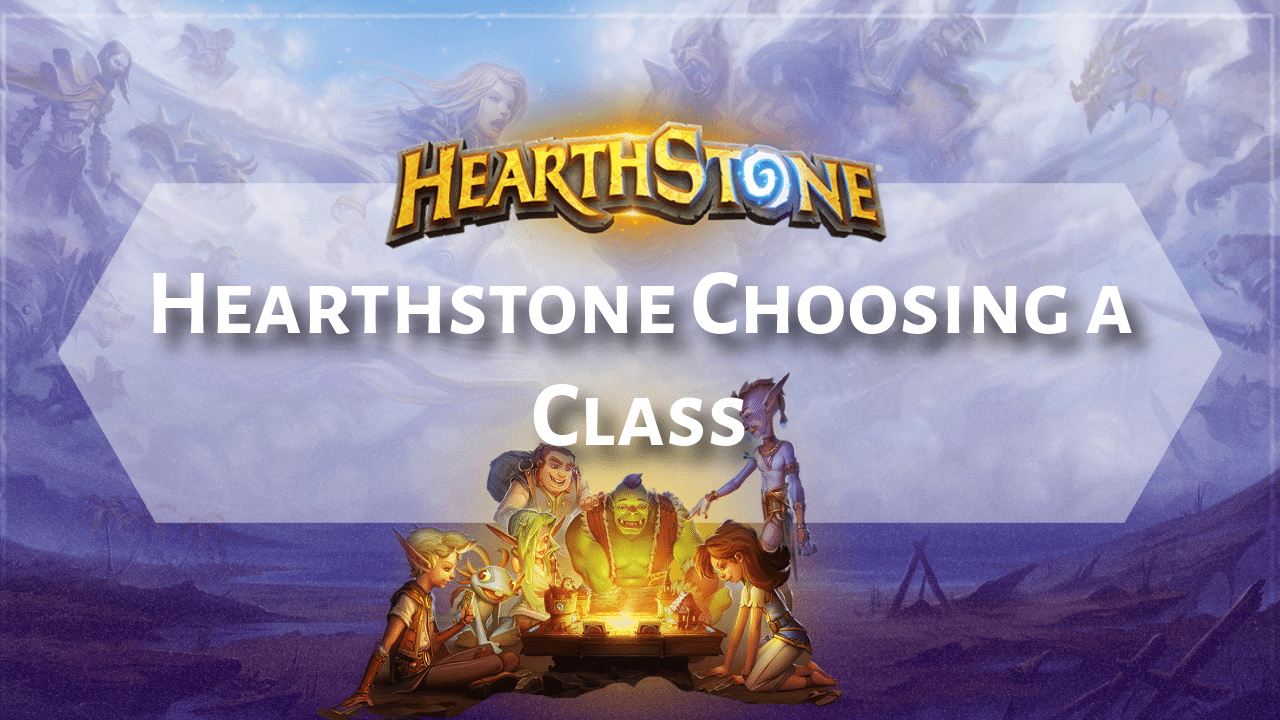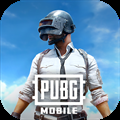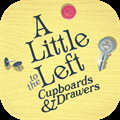
Hearthstone Choosing a Class:Introduction
Hearthstone is a free-to-play online card game that blends strategy, deck-building, and turn-based combat in a fast-paced, accessible format. Players choose from 11 distinct classes, each with its own unique hero power and class-specific cards, to construct a 30-card deck and face off against opponents in a battle to reduce their health to zero. Every match involves careful resource management, tactical decision-making, and adapting to the ever-changing game state.
The game’s meta is constantly shifting with the release of new expansions, which introduce fresh mechanics, new card types, and even additional classes, such as Demon Hunter in 2020 and Death Knight in later updates. These changes keep the gameplay dynamic, encouraging players to explore different strategies and refine their decks. Some classes thrive on aggressive, fast-paced tactics, while others focus on control, resource management, or intricate combos, offering a wide range of playstyles to suit different preferences.
Choosing a main class is a key decision for both new and returning players, as each class provides distinct strategic approaches and deck-building opportunities. Some classes excel at board control and survival, while others specialize in overwhelming opponents with relentless pressure. Understanding these differences is essential for finding the class that best aligns with your playstyle.
This guide provides an in-depth look at the various Hearthstone classes, breaking down their unique playstyles, strengths, and weaknesses to help you make an informed decision. Each class offers distinct strategies and deck-building opportunities, catering to different preferences and skill levels. Whether you thrive on fast and aggressive gameplay, prefer a balanced mid-range approach, or enjoy the challenge of slow, methodical control strategies, selecting a class that aligns with your playstyle will enhance your overall experience and set you on the path to mastering the game.
Aggressive players may gravitate toward classes that excel in early-game pressure, utilizing low-cost minions and direct damage to overwhelm opponents before they can establish a solid defense. If you prefer a mix of tempo and value, mid-range classes offer a flexible playstyle that adapts to different matchups, focusing on board control and sustained pressure. For those who enjoy long-term strategy and resource management, control-oriented classes provide powerful defensive tools, board clears, and late-game win conditions that can outlast opponents in drawn-out battles.
By understanding the fundamental mechanics of each class, you can make a confident choice that complements your personal playstyle. This guide not only introduces the core identities of each Hearthstone class but also highlights the archetypes they typically support, giving you the knowledge needed to experiment, refine your strategy, and ultimately find the perfect class that makes every match enjoyable and rewarding.
Understanding Your Preferred Playstyle
Hearthstone decks are generally categorized into three primary archetypes, each defining a different pace and strategy for winning the game. Aggro decks focus on securing victory quickly, often before turn 10, by swarming the board with low-cost minions and direct damage spells. They maintain pressure by attacking the opponent’s hero consistently while keeping board control.
Subtypes like Token decks rely on generating a wide board of minions and enhancing them with buffs, while Zoo decks use a steady flow of small minions to dominate trades. Hunter, Druid, Warlock, and Warrior have historically excelled in aggro strategies. Mid-range decks strike a balance between aggression and control, playing efficient minions each turn to maintain tempo and apply constant pressure. These decks capitalize on value and adaptability to outlast aggro while overwhelming control decks before they stabilize.
Shaman, Demon Hunter, Mage, and Paladin have been prominent mid-range classes, with Paladin once considered the pinnacle of mid-range play. Control decks, in contrast, take a slower, defensive approach, prioritizing survival through removal spells, board clears, and sustain effects like healing or armor gain. They aim to exhaust the opponent’s resources before turning the tide with powerful late-game threats. Warrior, Priest, and Warlock have traditionally been strong control classes.
Additionally, Combo and One-Turn Kill (OTK) decks operate outside the standard archetype triangle, often resembling control decks early on while they assemble specific card combinations to unleash devastating game-winning effects in a single turn. Rogue is particularly known for its combo-oriented playstyle. When selecting a deck, consider which playstyle aligns with your preferences—whether it’s the speed and aggression of aggro, the adaptability of mid-range, or the patience and precision of control. Identifying your preferred strategy will help you choose a class that complements your approach to the game.
Exploring the Hearthstone Classes and Their General Tendencies
Demon Hunter, introduced in 2020, is a fast-paced, aggressive class with the one-mana hero power, Demon Claws, which grants +1 Attack for the turn. The class excels at early aggression, using Demon minions and the Outcast mechanic, which provides bonus effects when played from the left or right-most position in hand. While Demon Hunters are strong in tempo-based and aggressive strategies, they can struggle against decks with significant healing or Taunt minions and may falter in prolonged games. At launch, Demon Hunter decks were considered extremely powerful.
Druid is a versatile class capable of adapting to various archetypes, from aggressive swarm strategies to late-game control with large minions. Its hero power, Shapeshift, grants +1 Attack and +1 Armor for the turn. A defining trait of Druid is its ability to accelerate mana, commonly called “ramp,” allowing access to high-cost cards earlier than other classes. Druid decks can flood the board with Taunt minions, heal, and generate resources, but they often lack efficient single-target removal and rely on maintaining board presence to control the game.
Aggro, mid-range, and control archetypes are all viable, with fast swarm-based decks also being an option. Some perceive Druid to have become more accessible to play over time due to certain card releases.
Hunter is often regarded as one of the easiest classes to play, featuring a direct-damage hero power, Steady Shot, which deals 2 damage to the opponent’s hero. This naturally supports aggressive strategies focused on rapidly reducing enemy health. Hunter decks emphasize early board presence and consistent damage, often running many minions and fewer spells. However, the class generally lacks strong healing or defensive tools and can struggle in longer games or against decks with strong board clears. Hunter’s removal options are primarily minion-based rather than spell-based. Its straightforward, aggressive game plan makes it a strong choice for beginners.
Mage is a spell-centric class with a flexible playstyle. Its hero power, Fireblast, deals 1 damage to any target, allowing it to control the board efficiently. Mages excel at direct damage spells, AoE board clears, and generating additional spells. While Mage minions may not always be the strongest in terms of raw stats, their spell effects provide significant impact.
The class supports various archetypes, including aggressive Tempo Mage, control decks, and combo-based strategies. Often referred to as the tutorial class, Mage is another solid option for new players to learn spell usage and resource management. However, some aspects of the class can feel weaker compared to others, such as its board clears versus Warlock’s or its minions compared to Paladin’s.
Paladin is a minion-focused class that thrives on board presence and buffs. Its hero power, Reinforce, summons a 1/1 Silver Hand Recruit, making it well-suited for strategies that involve swarming the board and enhancing minions with spells. Paladins use mechanics like Divine Shield, healing, and hand-buff effects to strengthen their board. While they have access to buffs, card draw, and healing, they have historically lacked reliable single-target removal, relying on minion trades instead. Paladin supports aggressive, mid-range, and control strategies and is considered relatively straightforward to play, making it a viable option for new players alongside Death Knight.
Priest is traditionally a control-oriented class centered around board control, healing, and attrition. Its hero power, Lesser Heal, restores 2 Health to any target, reinforcing a slower, sustain-based playstyle. Priests excel at removal, resurrection effects, and generating additional resources to outlast opponents. While commonly played as a defensive class, aggressive Shadow Priest archetypes focus on dealing damage instead. Priest games tend to be longer, and the class is not typically known for direct damage to the opponent’s hero, relying more on minion combat. Card draw can also be more challenging for Priest compared to other classes.
Rogue is a resourceful and combo-heavy class that excels at playing multiple cards in a single turn. Its hero power, Dagger Mastery, equips a 1/2 weapon, offering consistent damage output. Rogue decks often feature low-cost cards, enabling explosive turns with powerful synergy. The class supports both aggressive strategies and intricate combo-based or OTK (One Turn Kill) decks. However, Rogue generally lacks healing and strong defensive minions, making it vulnerable to aggressive opponents. Its removal options can be situational or require setup. Due to its complexity and reliance on sequencing and resource management, Rogue is not typically recommended for beginners and can also be expensive to play effectively.
Shaman is a class known for its unpredictability and fluctuating strength in the meta. Its hero power, Totemic Call, summons a random basic Totem, which can provide utility in different situations. A defining trait of Shaman is the Overload mechanic, which allows the use of powerful cards at a lower immediate mana cost but locks some mana on the following turn, requiring careful planning. Shamans can establish strong boards with minions and have access to potent spells for both offense and defense. Their strategy often revolves around early board control and sustained pressure, though Overload can sometimes hinder their late-game potential.
Warlock is a class that utilizes health as a resource, with its hero power, Life Tap, allowing card draw at the cost of 2 health. This ability fuels both aggressive “Zoo” decks that aim to flood the board with low-cost minions and control-oriented “Handlock” decks that capitalize on a large hand size for powerful effects. Warlocks have access to strong Demon minions, board clears, and life-steal effects, helping mitigate the downside of their hero power. Effective Warlock play requires careful health management, as overusing Life Tap can be risky. The class has a history of strong, and occasionally overpowered, deck archetypes.
Warrior is a class that offers a broad spectrum of playstyles, from aggressive Pirate Warrior decks to slow, armor-stacking control strategies. Its hero power, Armor Up!, grants 2 Armor, reinforcing its defensive potential. Warriors excel at minion removal using weapons and spells while accumulating armor to survive against aggressive opponents. However, they can sometimes struggle with card generation, requiring efficient resource management. Aggro Warrior decks are typically more accessible to play, while control Warrior demands a deep understanding of matchups and strategic removal usage.
Death Knight, the most recent class addition, features a unique Rune system with three types—Blood, Frost, and Unholy—each influencing deck-building and playstyle. Unholy specializes in swarming the board with weaker minions and leveraging the Corpse mechanic, which accumulates when friendly minions die, to enhance other cards. Frost focuses on direct damage and freezing enemy minions, often mirroring Tempo Mage’s aggressive spell-based playstyle.
Blood is a control-focused rune that prioritizes survivability, life steal, and board disruption. Death Knight’s hero power, Ghoul Charge, summons a 1/1 Ghoul with Charge that dies at the end of the turn, providing a steady stream of damage. The Rune system introduces an additional layer of complexity to deck construction, limiting certain card combinations and requiring thoughtful deck-building decisions. While Death Knight offers diverse playstyles, its mechanics may present a steeper learning curve for absolute beginners.
Considering Class Difficulty
For players new to Hearthstone, some classes provide a smoother introduction to the game’s mechanics. Hunter is a great starting point due to its straightforward aggressive playstyle, focusing on dealing direct damage with minimal need for complex strategy. Mage, often used in tutorials, helps players learn the fundamentals of spell usage and board interaction, making it an excellent class for understanding key mechanics. Paladin is another accessible option, emphasizing minion-based gameplay and buffs, which reinforces board control and trading concepts.
On the other hand, classes like Rogue, with its reliance on intricate combos and resource management, and Warlock, which requires careful health management through its Life Tap hero power, present a steeper learning curve. Success with these classes often depends on understanding synergies and making strategic risk-versus-reward decisions. Death Knight introduces additional complexity with its Rune system, which dictates deck-building choices and playstyle. Learning the differences between Unholy, Frost, and Blood archetypes may require more initial experimentation, making it less intuitive for beginners.
Thinking About Long-Term Investment
The cost of building competitive decks in Hearthstone varies significantly based on the class and archetype, as some decks require a higher number of rare, epic, or legendary cards, leading to a greater “dust” investment for crafting. Understanding the financial demands of different deck types can help players make informed decisions about where to allocate their resources, especially when crafting cards.
Aggressive decks, such as many Hunter or Demon Hunter builds, tend to be more affordable because they rely heavily on common and rare cards that provide early-game tempo and direct damage. These decks focus on quick victories, often requiring fewer expensive legendary cards to function effectively. In contrast, control and combo-oriented decks, commonly found in Priest, Warrior, and Warlock, often demand multiple epics and legendaries to execute powerful late-game strategies. These decks typically revolve around high-value cards that generate long-term advantages, making them more expensive to build but rewarding for those who enjoy methodical, resource-driven gameplay.
Mid-range decks can vary in cost, depending on the class and strategy. Some mid-range decks remain budget-friendly, utilizing efficient minions and straightforward synergies, while others incorporate legendary win conditions or powerful board swings that raise their overall dust requirements. Additionally, classes like Mage, Paladin, and Shaman often have flexible deck-building options, allowing players to experiment with different playstyles at various price points.
As you progress in the game and identify a class or playstyle that suits you, considering budget-friendly deck options and the cost-effectiveness of different archetypes in the current meta can help you optimize your collection. Some expansions and balance changes may make certain decks more affordable or expensive over time, so staying aware of shifts in the game can aid in making efficient crafting decisions. Prioritizing versatile cards that fit multiple decks or archetypes can also help stretch your resources further, ensuring that you can adapt to the evolving meta while maintaining a strong collection.
Conclusion
The most important factor in choosing a Hearthstone class is personal enjoyment. While understanding class strengths, weaknesses, and meta viability is valuable, the class you find most engaging is the one you will naturally dedicate time and effort to mastering. Enjoyment fuels improvement, making it easier to refine strategies, learn optimal plays, and adapt to different matchups.
For new players, Hearthstone’s early “Apprentice Ranks” provide a low-pressure environment where losses do not cost stars. This is the perfect opportunity to experiment with different classes and archetypes, gaining firsthand experience with their unique mechanics, hero powers, and playstyles. Trying out various decks will help you determine whether you prefer aggressive, fast-paced strategies, balanced mid-range gameplay, or slower, control-oriented approaches that emphasize resource management and long-term planning.
Beginner-friendly classes like Hunter and Mage offer straightforward yet effective game plans that teach essential mechanics such as board control, minion trading, and spell usage. These classes allow players to build a strong foundation in Hearthstone’s core gameplay without overwhelming complexity. As you gain experience and confidence, exploring more intricate classes like Rogue, Warlock, or Death Knight can open the door to advanced strategies, including combo-based win conditions, resource manipulation, and deck synergy optimization.
Over time, refining your playstyle and developing a deeper understanding of your preferred class will lead to more satisfying and consistent gameplay. Whether you enjoy overwhelming opponents with relentless aggression, outmaneuvering them with precise combos, or controlling the board with powerful removals and defensive strategies, finding the class that resonates with you will enhance your overall experience. Hearthstone offers a wide variety of classes and archetypes, so embracing experimentation and adapting to the ever-evolving meta will help you discover the perfect fit for your personal approach to the game.













